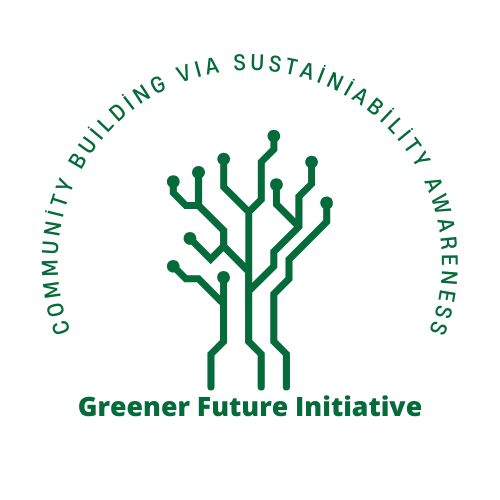What seems to be the hidden cost of convenience in this sustainable world?
We live in a world where convenience is king. Everything is available at the click of a button. Fast shipping, takeout meals, and disposable products make life easier. But have you ever considered the environmental cost of this instant gratification?
While these conveniences save time, they come with hidden consequences. Single-use plastics, excessive packaging, and fast shipping contribute to pollution and carbon emissions. Understanding the impact of our choices is crucial for creating a sustainable future.
The Environmental Cost of Convenience
The Rise of Single-Use Plastics
Single-use plastics dominate modern life. Plastic bags, straws, and takeout containers are everywhere. They are cheap, lightweight, and easy to dispose of. But they don’t just disappear. Most plastics take hundreds of years to decompose. Instead, they break into tiny microplastics, polluting oceans, harming wildlife, and entering the food chain.
According to environmental studies, millions of tons of plastic enter the ocean yearly. Marine animals mistake plastic for food, leading to health issues and death. Single-use plastics are also linked to greenhouse gas emissions. Manufacturing and disposing of plastic require fossil fuels, contributing to climate change.
Fast Shipping and Carbon Footprint
Online shopping has revolutionized retail. Consumers expect same-day or next-day delivery. However, fast shipping has a significant environmental impact. The demand for quick delivery means more transportation, more fuel consumption, and higher carbon emissions.
Express shipping often requires air transport, which emits large amounts of CO2. Warehouses and distribution centers work around the clock, consuming massive energy. Excess packaging adds to the waste problem. Each delivery might include unnecessary plastic wrapping, oversized boxes, and disposable fillers.
Food Delivery and Takeout Culture
Food delivery services have skyrocketed in popularity. Apps make it easy to order meals in minutes. However, takeout culture generates enormous waste. Disposable containers, plastic utensils, and excessive napkins end up in landfills. Many of these materials are not biodegradable.
The food industry also contributes to carbon emissions. Transporting meals from restaurants to homes requires fuel. The energy used to keep food warm or refrigerated increases the environmental footprint. While convenience is attractive, the long-term effects on the planet are concerning.
How Consumers Can Make Better Choices
Reduce Single-Use Plastics
Cutting down on plastic waste is one of the most effective ways to reduce environmental impact. Here’s how you can help:
- Use reusable shopping bags, water bottles, and coffee cups.
- Say no to plastic straws and utensils.
- Choose products with minimal or biodegradable packaging.
- Support businesses that use sustainable materials.
Many companies now offer eco-friendly alternatives. Glass, metal, and bamboo replacements for plastic products are widely available. Small changes in daily habits can significantly impact the planet.
Choose Sustainable Shipping Options
Online shopping isn’t going away, but we can shop more responsibly:
- Opt for slower shipping methods to reduce carbon emissions.
- Bundle purchases to receive fewer packages.
- Support retailers with sustainable shipping practices.
- Recycle or reuse packaging whenever possible.
Some companies offer carbon-neutral shipping or use recycled materials. Supporting these brands encourages the industry to adopt greener practices.
Make Eco-Friendly Food Choices
Ordering takeout doesn’t have to mean excess waste. Try these simple steps:
- Bring your own reusable container when picking up food.
- Request no plastic utensils if you’re eating at home.
- Choose restaurants that use compostable packaging.
- Cook more meals at home to reduce reliance on takeout.
Meal planning and reducing food waste also contribute to sustainability. Cooking at home cuts down on packaging and emissions from food delivery services.
The Role of Businesses in Sustainable Convenience
Sustainable Packaging Solutions
Companies must rethink packaging. Many brands are switching to biodegradable, compostable, and recycled materials. Retailers should reduce excess packaging and eliminate unnecessary plastic.
Greener Logistics and Shipping
Businesses can lower their carbon footprint by improving logistics. Consolidating shipments, using electric delivery vehicles, and optimizing supply chains help reduce emissions. Some companies invest in carbon offset programs to balance their impact.
Promoting Circular Economy
A circular economy focuses on reusing, recycling, and repurposing materials. Brands can encourage customers to return used products for recycling. Repair and refurbishment programs extend product life cycles, reducing waste.
The Future of Convenience and Sustainability
Convenience doesn’t have to come at the planet’s expense. Technology and innovation can lead to more sustainable solutions. Advancements in biodegradable materials, renewable energy, and efficient logistics will shape the future of convenience.
Governments and industries must collaborate to set stricter environmental standards. Consumers must also demand eco-friendly options. By making mindful choices, we can enjoy convenience without harming the environment.
Conclusion
The hidden cost of convenience is a growing concern. Single-use plastics, fast shipping, and disposable culture take a toll on the planet. But consumers and businesses can make a difference. By reducing waste, choosing sustainable alternatives, and supporting green businesses, we can create a more sustainable world.
Convenience and sustainability can coexist if we make responsible choices today for a better tomorrow.

